Uploading a Sketch to Arduino in Atom Quora

This commodity explains a simple pure sine wave inverter excursion using Arduino, which could be upgraded to reach any desired ability output as per the user's preference
Circuit Operation
In the last article nosotros learned how to generate sine wave pulse width modulation or SPWM though Arduino, we are going to use the same Arduino board to make the proposed simple pure sine moving ridge inverter circuit.The design is really extremely straightforward, as shown in the following effigy.
You merely have to program the arduino board with the SPWM lawmaking equally explained in the previous article, and hook it up with some of the external devices.
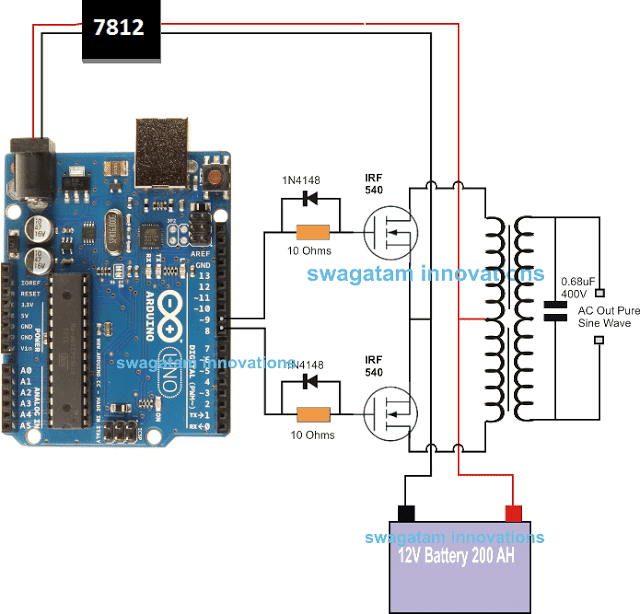
Pivot#8 and pin#ix generate the SPWMs alternately and switch the relevant mosfets with the same SPWM blueprint.
The mosfst in turn induce the transformer with loftier current SPWM waveform using the battery power, causing the secondary of the trafo to generate an identical waveform but at the mains AC level.
The proposed Arduino inverter excursion could exist upgraded to any preferred college wattage level, merely by upgrading the mosfets and the trafo rating accordingly, alternatively you tin can also catechumen this into a total bridge or an H-bridge sine wave inverter
Powering the Arduino Board
In the diagram the Arduino board could be seen supplied from a 7812 IC excursion, this could be congenital by wiring a standard 7812 IC in the following manner. The IC will ensure that the input to the Arduino never exceeds the 12V mark, although this might not be absolutely critical, unless the bombardment is rated over 18V.
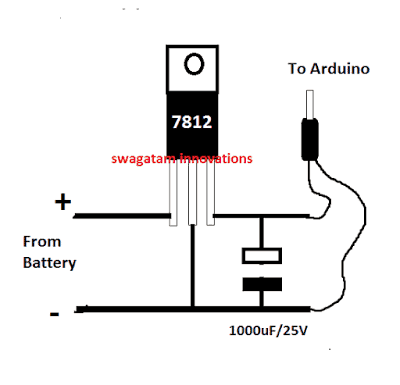
If you lot accept any questions regarding the above SPWM inverter circuit using a programmed Arduino, delight feel complimentary to ask them through your valuable comments.
Waveform Images for Arduino SPWM
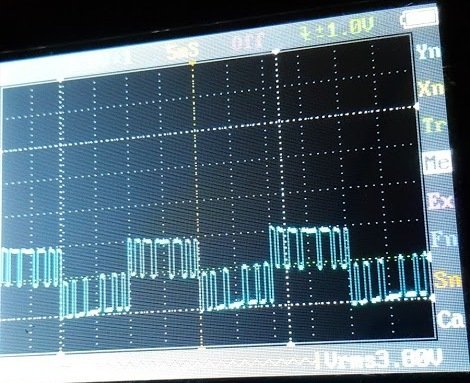
Image of SPWM waveform as obtained from the above Arduino inverter design (Tested and Submitted Past Mr. Ainsworth Lynch)
For the Programme Code please visit the following link:
Arduino SPWM Generator Circuit
UPDATE:
Using BJT Buffer Stage as Level Shifter
Since an Arduino board will produce a 5V output, information technology may not exist an ideal value for driving mosfets directly.
Therefore an intermediate BJT level shifter stage may be required for raising the gate level to 12V so that the mosfets are able to operate correctly without causing unnecessary heating up of the devices,. The updated diagram (recommended) can be witnessed below:
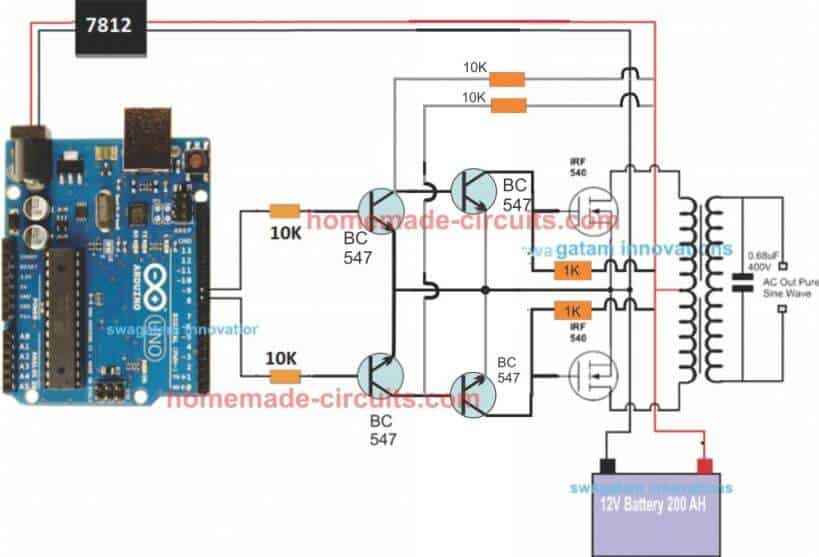
Video Clip
Parts List
All resistors are 1/4 watt, 5% CFR
- 10K = four
- 1K = ii
- BC547 = 4nos
- Mosfets IRF540 = 2nos
- Arduino UNO = 1
- Transformer = 9-0-9V/220V/120V current as per requirement.
- Battery = 12V, Ah value as per requirement
Delay Result
To ensure that the mosfet stages initiate with a delay during the Arduino booting or start up, y'all may modify left side BC547 transistors into delay ON stages, as shown below. This volition safeguard the mosfets and prevent them from burning during power switch ON Arduino booting.
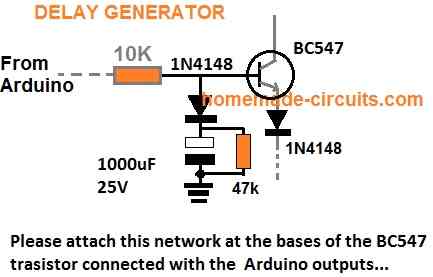
FOR INCREASING THE Filibuster YOU Tin can INCREASE THE 10K VALUE TO 100K
Adding an Automatic Voltage Regulator
Merely like any other inverter the output from this blueprint can rise to dangerous limits when the bombardment is fully charged.
To control this an automated voltage regulator could be employed as shown below.
The BC547 collectors should be connected to the bases of the left side BC547 pair, which are connected to the Arduino via 10K resistors.
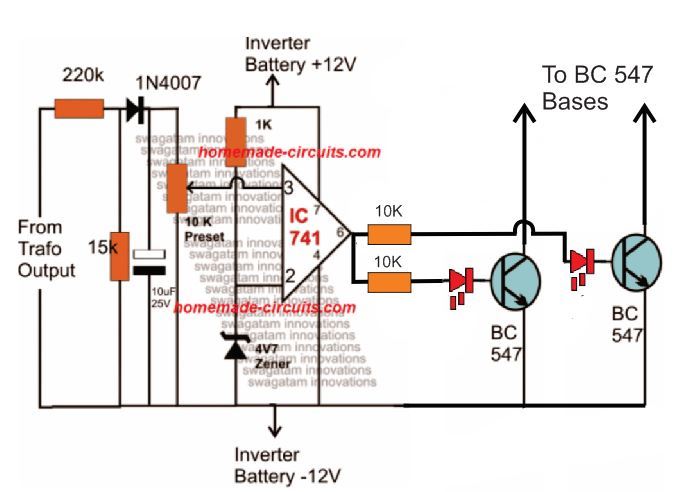
For an isolated version of voltage correction circuit nosotros can modify the in a higher place circuit with a transformer, as shown below:
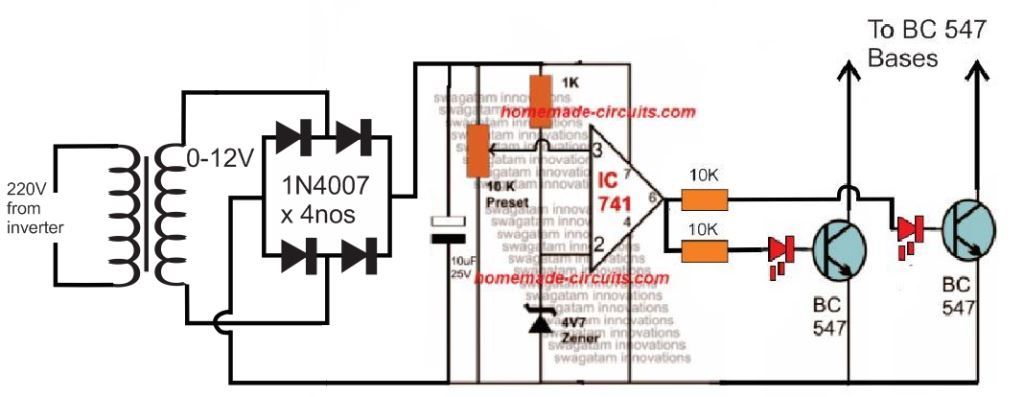
How to Setup
To set up the automatic voltage correction circuit, feed a stable 230V or 110V equally per your inverter specs to the input side of the circuit.
Next, adjust the 10k preset carefully such that the red LEDs merely lite up. That's all, seal the preset and connect the circuit with the above Arduino board for implementing the intended automatic output voltage regulation.
Using CMOS Buffer
Another design for the higher up Arduino sinewave inverter circuit tin can be seen below, the CMOS IC is used equally an aided buffer for the BJT stage
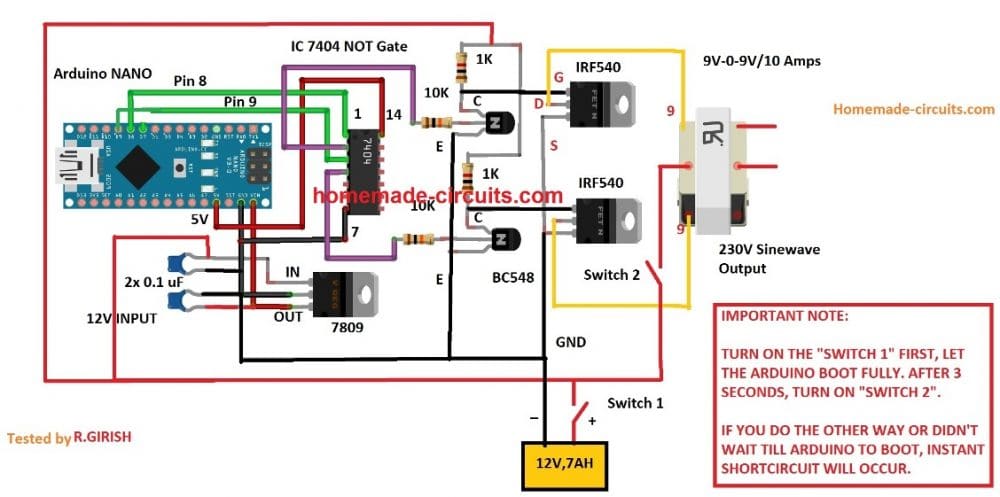
Important:
In club to avoid an accidental switch ON prior to Arduino booting, a simple delay ON timer circuit may be included in the above design, as shown below:
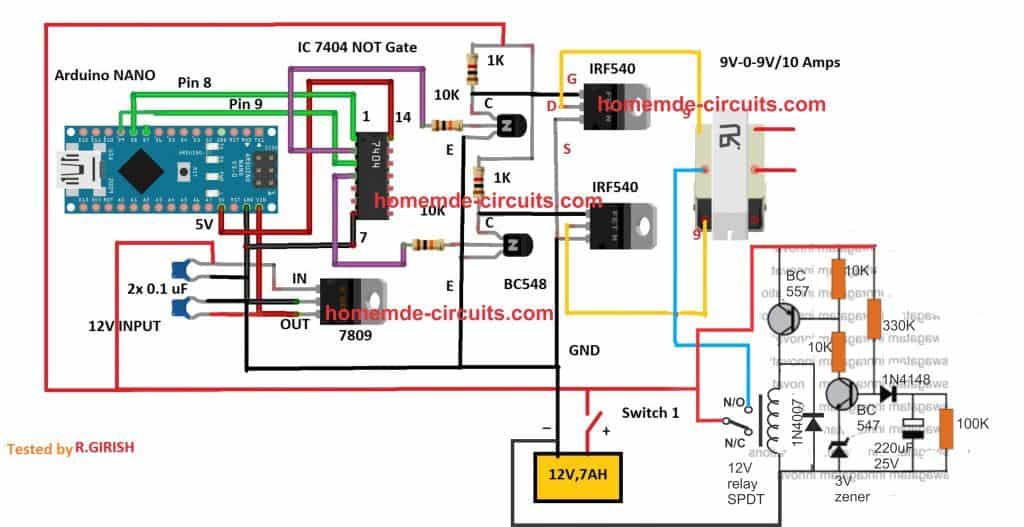
Reader Interactions
silversteinhishat.blogspot.com
Source: https://www.homemade-circuits.com/arduino-pure-sine-wave-inverter-circuit/

Post a Comment for "Uploading a Sketch to Arduino in Atom Quora"